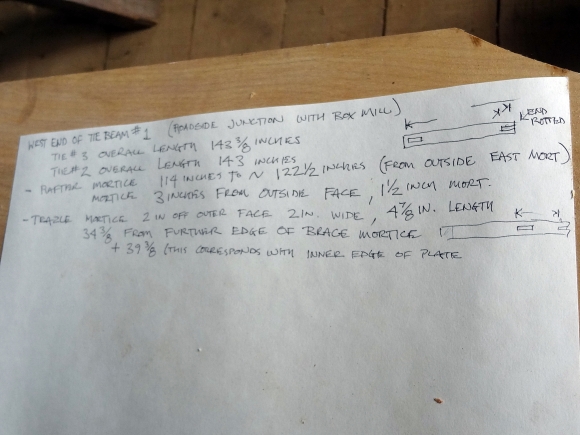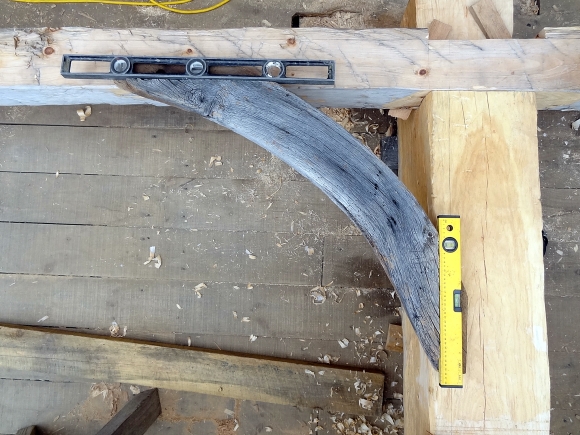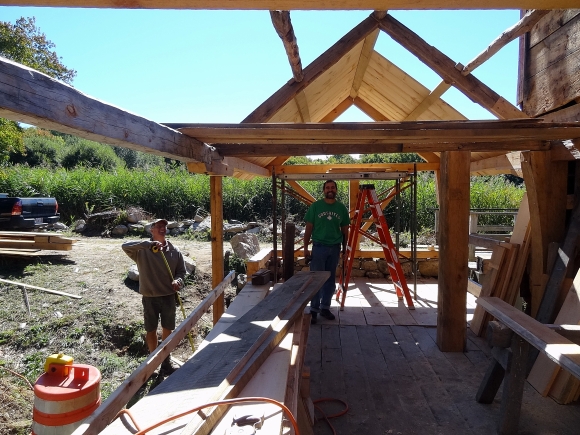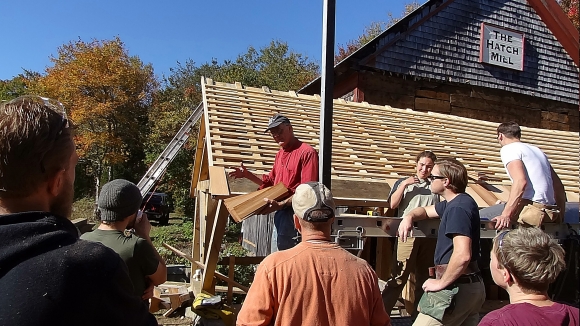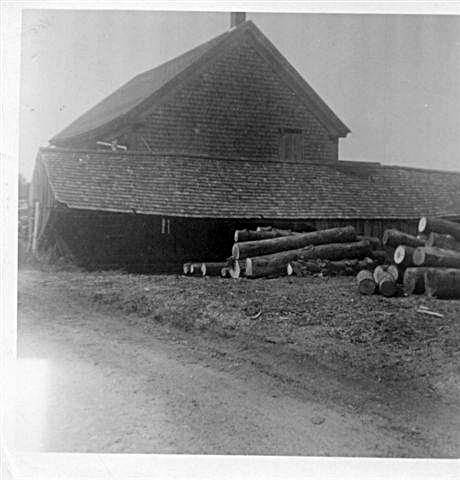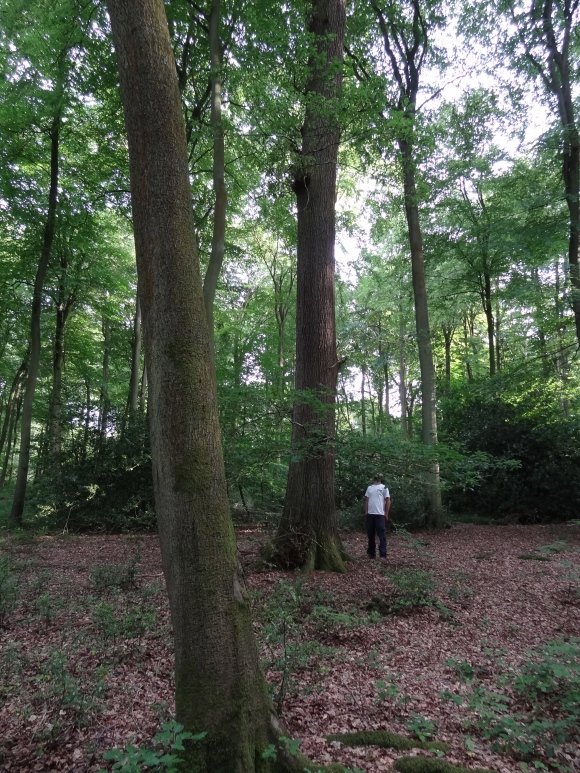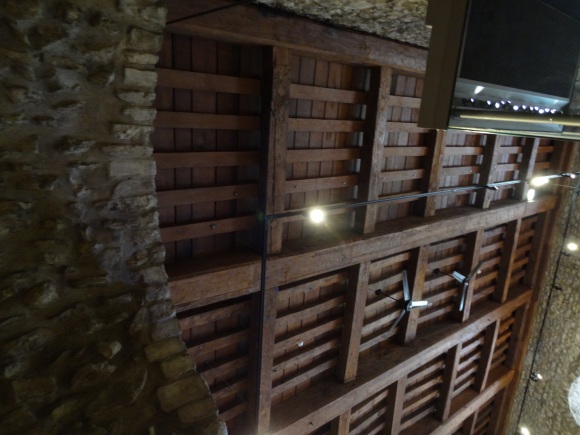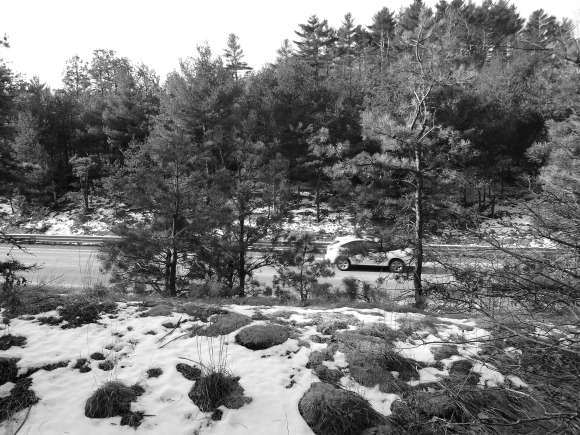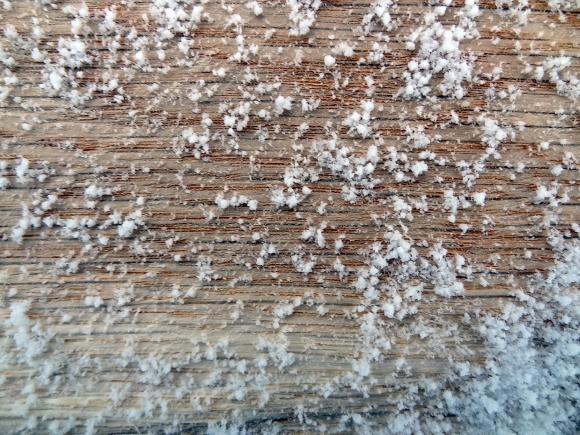A rehab in pictures…
The old sawmill had seen better days…
Its restoration would include as much of the original timber and sheathing as possible-
Joinery notes or a martini recipe? You decide-
Wanted: Oak and pine timber with an early 19th-century aspect:
Plans worked out and timbers hewn, it was time to cut.
We are not adverse to machines-
Though certain joints are cut in the old style:
A pin will crash this party between mortise and tenon-
Cutting is relatively easy, relative to layout that is…
The slow dance of trial fitting…
Here, Pret replaces the forlorn end of an old tie beam.
New life for old ties-
The beam in context with its new post:
A sweet little brace with perfectly swept grain is still perfectly functional-
Now that the majority of the sawmill’s frame was cut, the North Bennet Street School Preservation Carpentry Program helped us to raise it.
First the long walls–
Then the tie beams-
And good men who had been steadfast in their vision and support of this old up-and-down sawmill took a moment to enjoy the progress at day’s end-
Time to cover the new (old) frame-
The roof sheathing was also a mix of old and new:
September’s fair weather allowed us to make hay-
The NBSS students returned to get their shingling technique on-
There was good progress after a couple of days-
Preservation student Emily made a great video of the NBSS contributions:
MLB Restorations returned after a week of dreary October weather to finish roofing and start on sidewalls-
And with the help of many, what once was…
Continued a return to its former–if humble–glory.
For more information on the restoration of The Hatch Mill, please visit:
http://hatchmill.com/
or The Hatchmill Facebook page:
https://www.facebook.com/pages/Hatch-Mill/364489727000021


